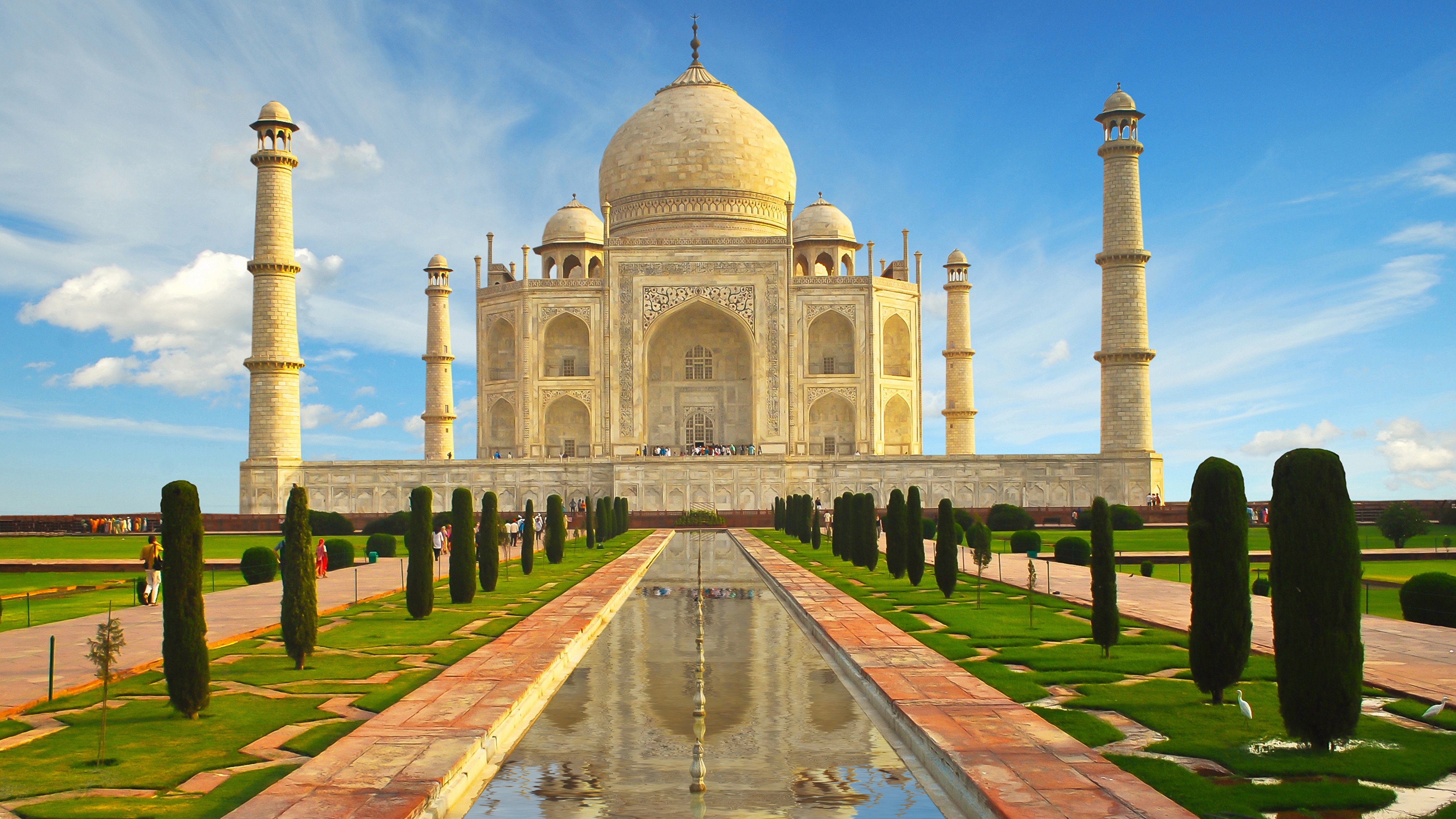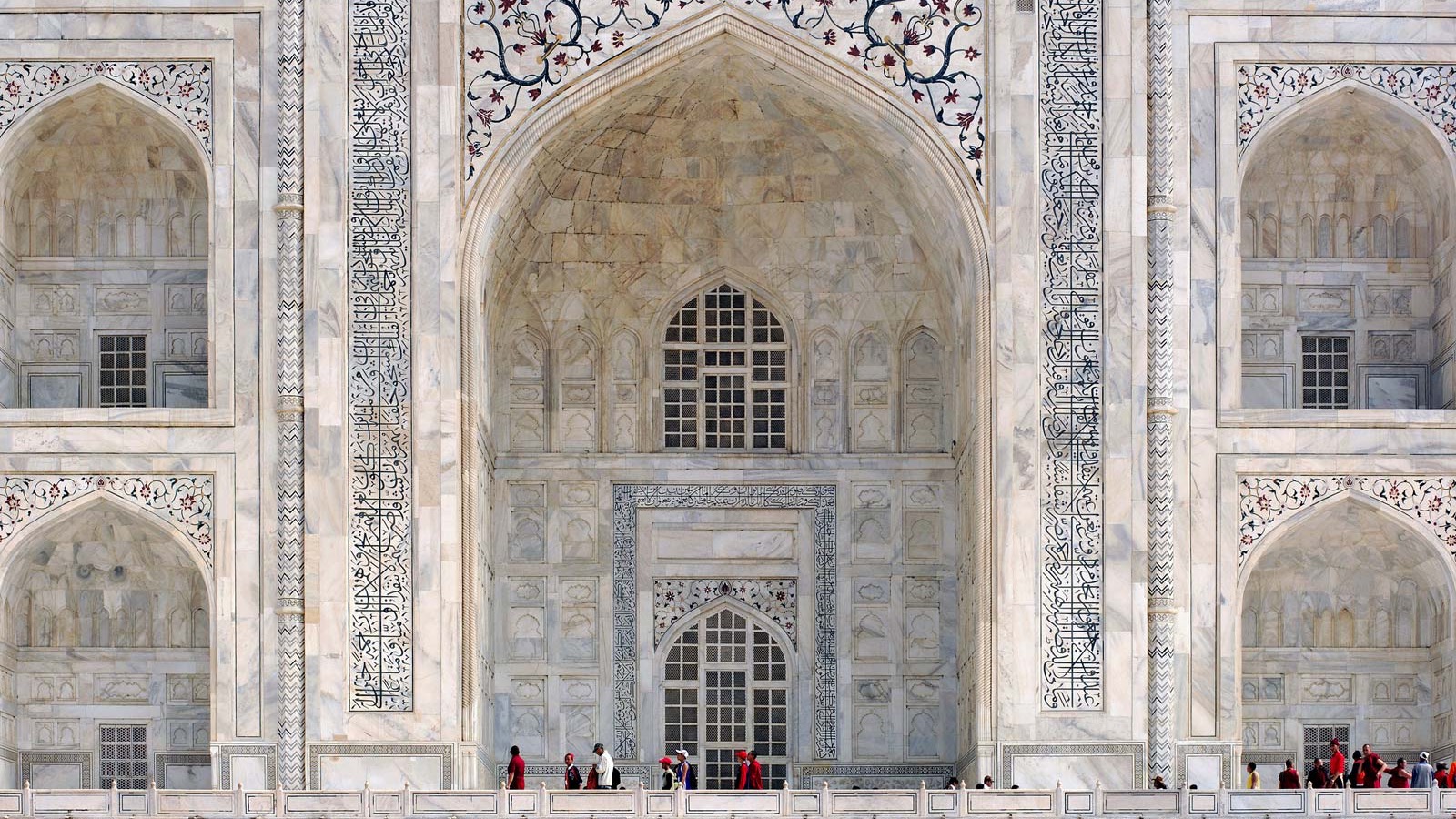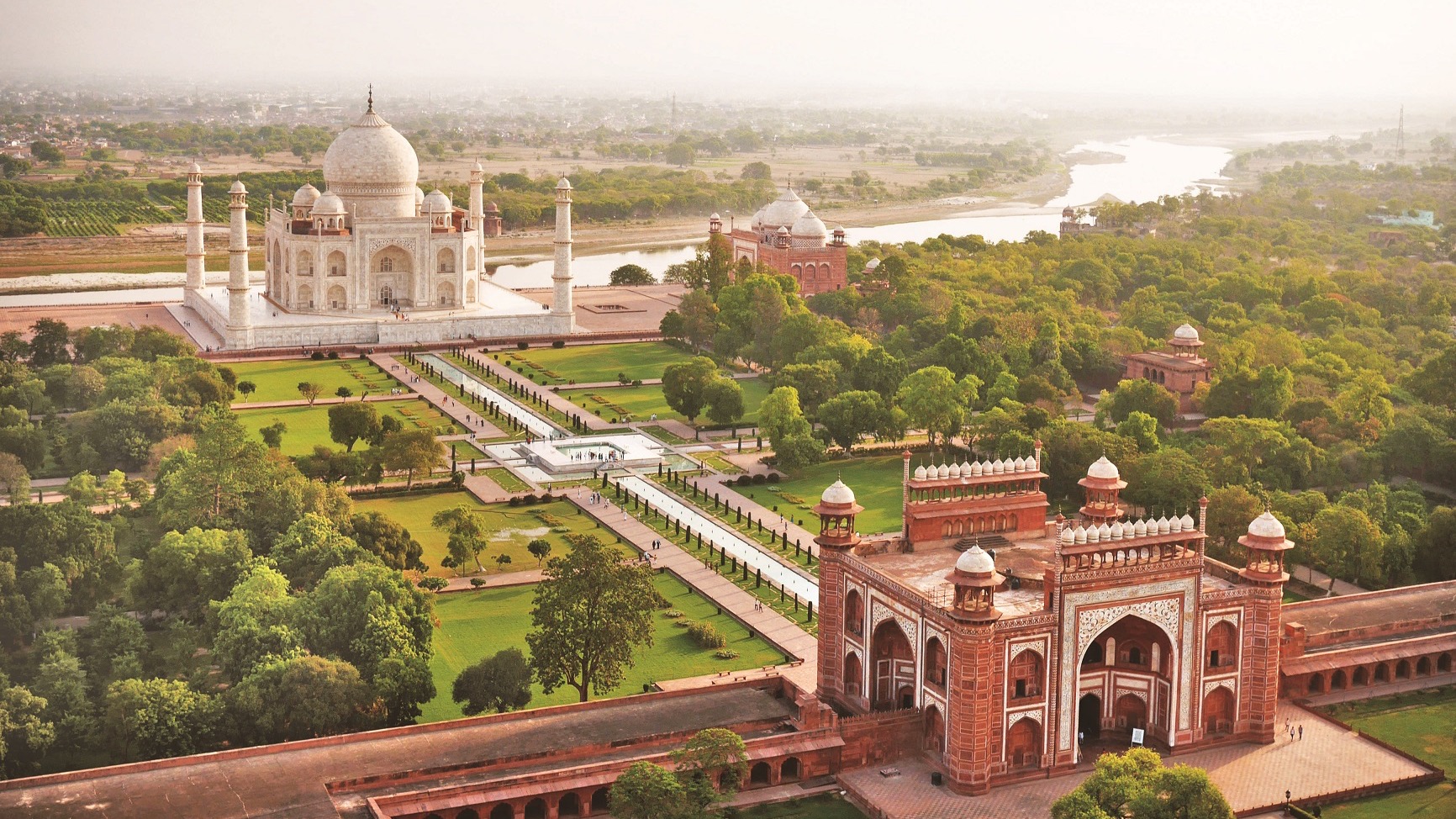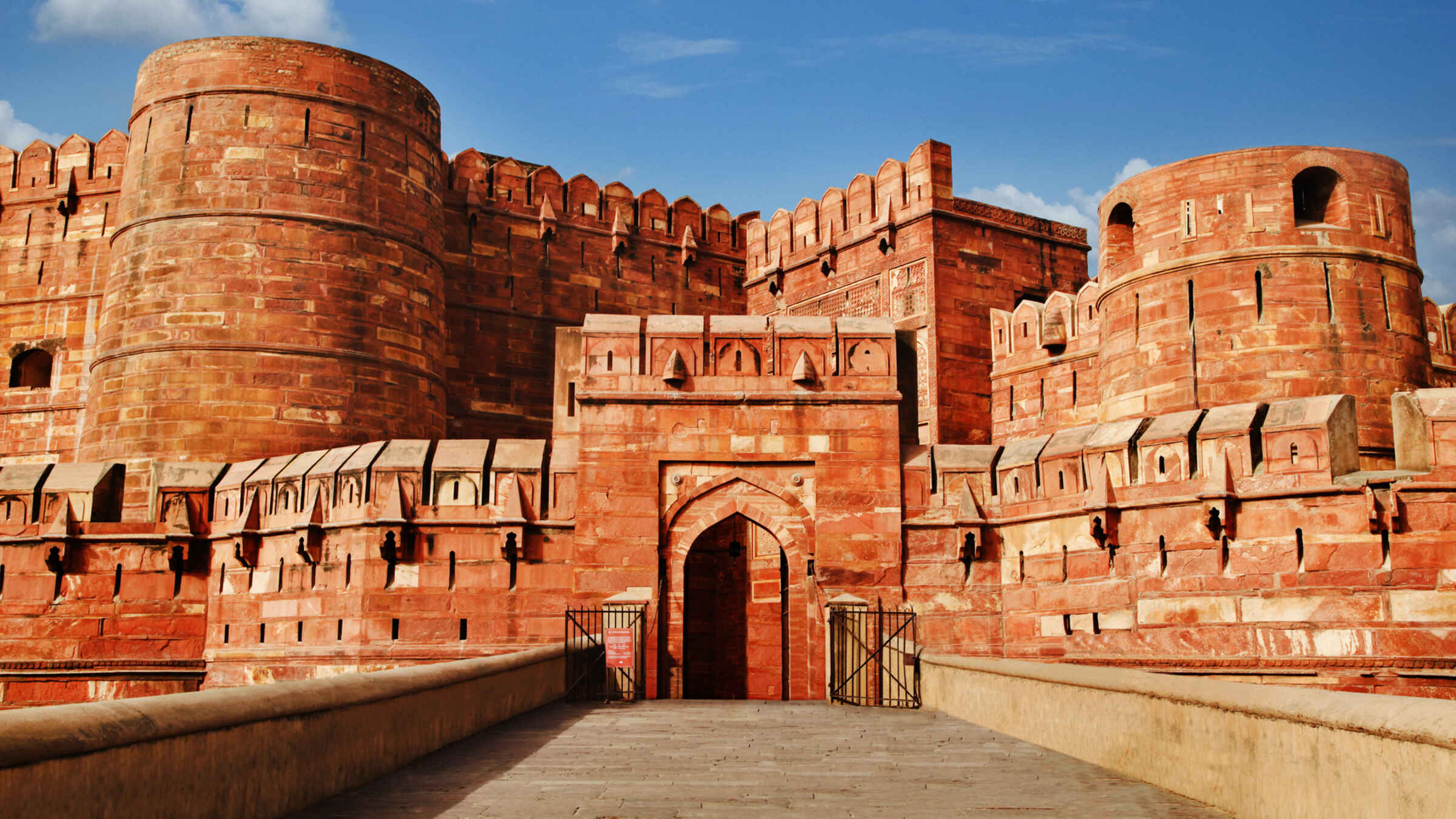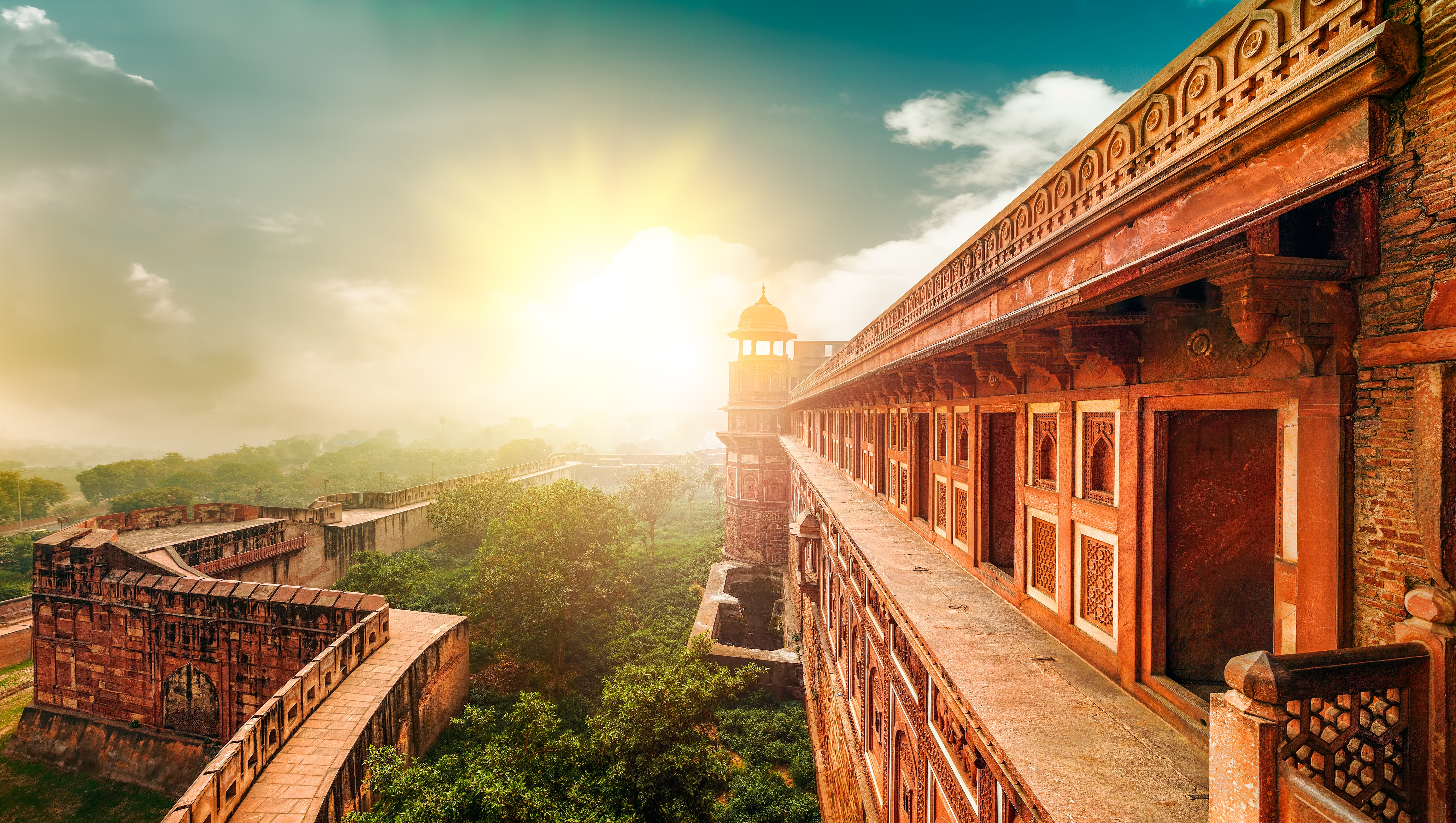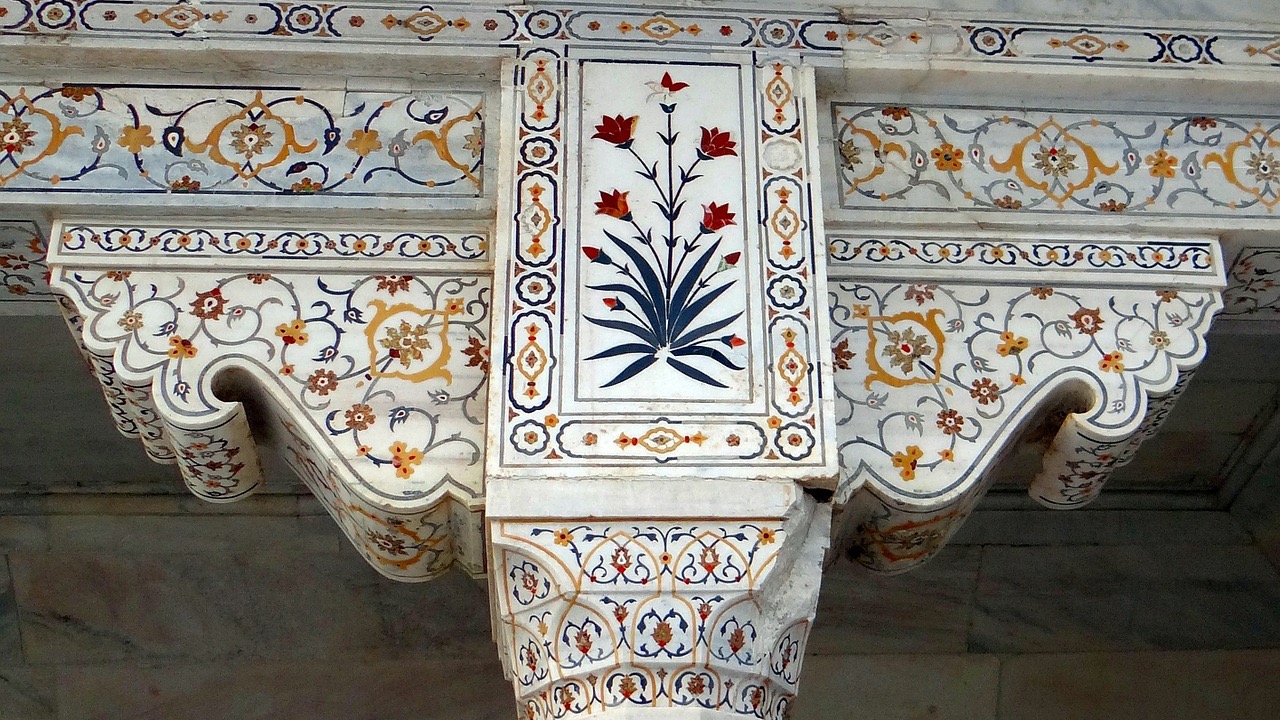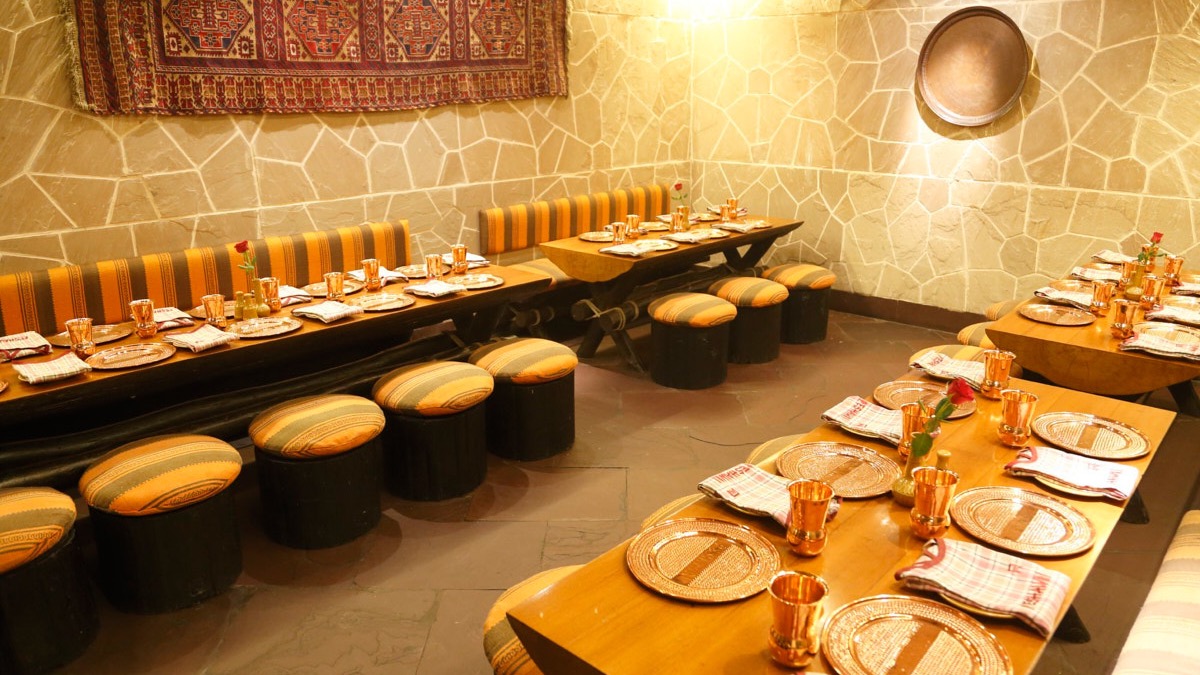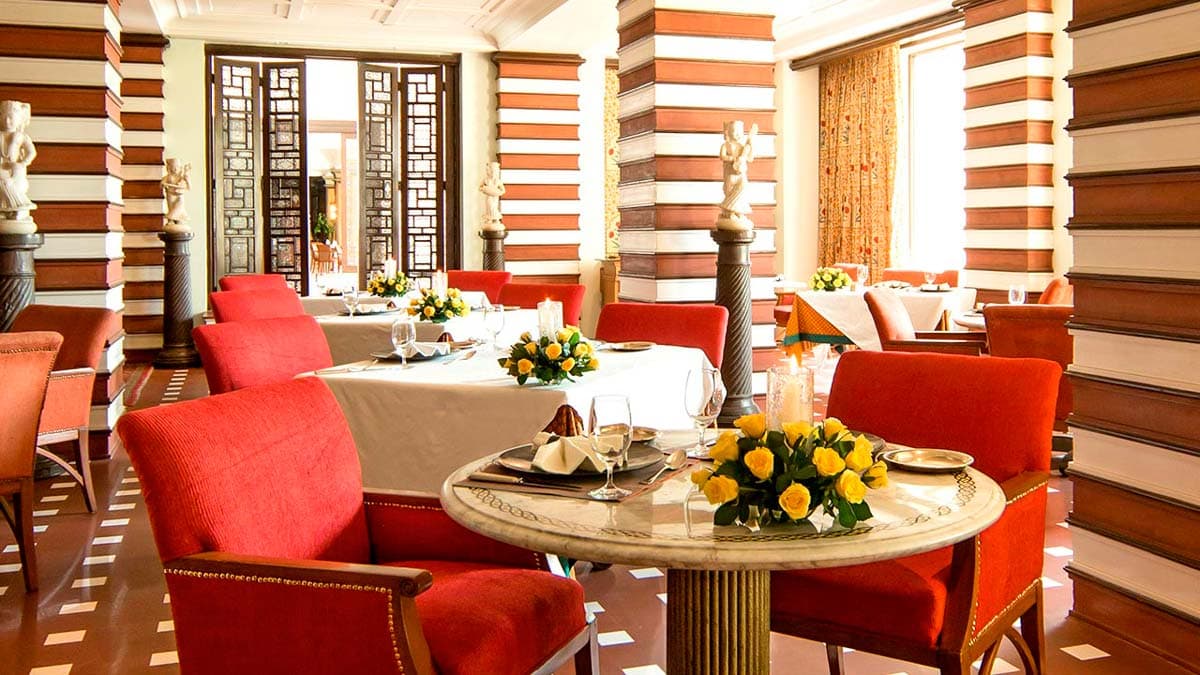For centuries Agra remained an obscure town in a strategic location. The tide turned when the Mughals invaded and established a new capital for its vast Indian empire. Vestiges of that era still live in the imposing forts, teeming bazaars, tranquil tombs and chaotic squares. The City of Agra is defined by the Taj Mahal, a chimerical cenotaph built by a grieving Emperor in memory of his beloved Queen.
Agra: Forgotten legacies, faded glories
It is a breezy 165-kilometre drive along the access-controlled, six-lane Yamuna Expressway which connects Delhi to Agra. Expanses of farmland shrink into traffic-clogged roads in the City of the Taj, but one is too distracted to notice. Red-sandstone domed pavilions dotting the Yamuna riverbanks have whisked you off to the sixteenth-century capital of the Mughal Empire. A world of moonlit gardens, tinkling fountains, rustling trees and birdsong. Of famed emperors, visionary architects, acclaimed poets and celebrated artisans. And the tragic love story of a royal couple, which has stirred creative imaginations through the ages.
Reality bites as you venture deeper into the sleepy urban settlement perched on the eastern banks of the revered river. Home to the fastest-growing middle-class in the country with a sizeable proportion of traders and merchants, here profession equals enterprise. In a classic Indian small city like Agra, ambitions have glass ceilings, community trumps individualism and nightlife equals fast-food chains. The political and military decline have robbed the city of its status, but an extravagant monument has pinned it firmly on every traveller's bucket list.
Every Agra trip begins or ends with the obligatory obeisance to the Taj Mahal.
Chimerical cenotaph
The first glimpse of the mausoleum framed in the monumental archway certainly does not cause racing pulses or skipped heartbeats. On the contrary, an unexpected calm settles as you nudge forward slowly, intent on absorbing the flawlessness of the setting with all your senses, sixth included. Crowds blur, voices muffle as you inch towards the high-square marble platform at the far end of the Charbagh (four gardens). "A teardrop on the cheek of time", declared the Bengali poet Rabindranath Tagore. You wouldn't dare disagree.
Time travel to the Mughal era would have revealed a very different Charbagh, a true likeness of its original inspiration, the mythical garden of paradise. A thicket of tall green trees, creating an almost celestial cover for the tomb, seductively revealing its pristine beauty as you approached. That would change a couple of centuries later. Enter Lord Curzon, the British Viceroy, who steals the thunder with his English garden landscaping.
Cut to the present. Up close with the marble monument, take stock of the enormity of its square shape. Pointed arches carved into all four sides and a mammoth dome of 55 metres crowned by a brass spire 17 metres high. Four corner minarets appear upright but lean outward so that if they were to fall, the direction would be outward. Zoom in on the details. Floral reliefs of 46 species of plants carved and engraved on the marble with precious stones. Lotus for purity, cypress for strength, tulips for love and pomegranate for abundance. Arabic verses adorning the archways are proportioned for illusion so that each letter appears to be the same size, even when viewed from any angle on the ground.
Step into the octagonal chamber ornamented with Pietra Dura (inlay of semi-precious stones). A marble lattice screen shields the solemn graves of the queen, Arjumand Banu Begum (Mumtaz Mahal), and her grieving husband, Emperor Shah Jahan. Her tomb is embellished with 99 names of Allah, while he has a pen box (symbol of a male ruler) to decorate his tomb. The actual coffins lie in a crypt below.
Perambulating the outer platform, pan out to the river beyond and process the project's magnitude, completed under the watchful eye of the principal architect, Ustad Ahmad Lahori and the designer of the central dome, Ismail Khan from the Ottoman Empire. An army of 20,000 men included sculptors from Bukhara, calligraphers from Syria, inlayers from southern India and stonecutters from Baluchistan. Twenty years in the making, with marble, onyx, amethyst, lapis lazuli, turquoise, jade, crystal, coral and mother-of-pearl from Persia, Russia, Afghanistan, Tibet, China and the Indian Ocean.
Word clouds form in your mind. Unfailing devotion of a doting husband or absolute power of a Mughal dynasty? Either way, you've fallen into a spell, hook, line and sinker. Recover from the stupor and come back at dawn to witness the magic when the mausoleum bathes in peachy pink. Return for the pearly greys of the mornings, dazzling whites of noon, bronzed golds of the sunset or the hallowed blues of the evenings. What about a full-moon night for extreme bragging rights?
Dynastic chronicles
A utopian preamble like that deserves a chronicle of epic proportions. Launch an odyssey into what the Mughal court chronicler, Abul Faz’l, described as "the emporium of the traffic of the world". The historic adventure kicks off at the formidable red sandstone walls of the Agra Fort, rising 70 feet and stretching for 2.5 kilometres along the banks of the Yamuna.
From these very fortifications, Emperor Akbar ruled over a kingdom that spanned the length and breadth of the country. Stories of empires and conquests, ambition and intrigue, indulgences and opulence could occupy days of your time. Wander among the scalloped arches, graceful courtyards and lofty bastions of the UNESCO World Heritage site. Can you hear the flutter of the wispy curtains on the pillars of the Peacock Hall? Feel the thumping of heavy footsteps in the courtyards? Spot the queen in a latticed window behind the Emperor's throne in the Hall of Public Audience?
Seventeenth-century visitors waxed eloquent about an evocative riverfront lined with lavish mansions, exquisite tombs and pleasure gardens. No pipe dream. Slip into the realm of nobility at Mehtab Bagh (Moonlit Garden), a sensual retreat abundant with shady walkways, soft fountains, fragrant flowers and limpid pools. Uninterrupted views of the Taj Mahal, especially on moonlit nights, are spellbinding.
The graceful garden tomb of Itimad-Ud-Daulah, commissioned by Empress Nur Jahan (Shah Jahan's queen) for her father in the early 1620s, stands on the left bank of the river. Cradled in flower-lined walkways and rows of cypress trees, it is a vision of perfect symmetry in pristine white marble. Elegant canopies, delicate stonework, intricate inlays, swirling cartouches, elegant floral motifs and sacred calligraphy, every element of the "Baby Taj" is loaded with visual appeal.
Culture bites
Sidestep the larger-than-life monuments and head to the neighbourhood of Taj Ganj, which once housed merchants and artisans engaged in the construction of the mausoleum. Trail the narrow streets lined with brick and mortar buildings till you reach mud-houses with thatched roofs. Descendants of artisans who built the Taj Mahal still practice the ancient art of Parchin Kari (Pietra Dura) in humble dwellings.
Hunt down tiny workshops where they wield tools of the trade. Watching them spinning a wheel while using a coloured gemstone as emery to embed precious stones in marble is strangely meditative. Marble tabletops, vases or trays inlaid with semi-precious stones, you could buy a keepsake to upgrade the royalty quotient of your home.
Head to the heart of the Old City to stumble upon crumbling structures and hidden gems, but also to immerse into everyday life. Devotees throng at temples, and tea stalls overflow with regulars. Accessories for deities, spice markets of Rawat Para, bangle shops of Kinari Bazar and gold and silver foil in Namak Ki Mandi will keep eyeballs busy all along. Experiment with the flavours of locally loved street food at Seth Gali. Sacrifice the calorie count in favour of tempting tastes with Petha (crystallised pumpkin sweet), Dalmoth (a savoury snack), Bedmi (deep-fried puffed bread), Jalebi (deep-fried sweet pretzel) and Samosa (deep-fried pastry with a spicy potato filling).
Venturing out
Consider driving 13 kilometres out of the city to Sikandra. The splendid tomb of Emperor Akbar befits the most glorified of all Mughal rulers and a patron of arts. Reflecting a mix of Mughal sensibilities and influences from Bengal, Gujarat, Rajasthan, it flaunts fine marble inlay and intricate mosaics. Sadly, the rich carpets, gold, silver and precious stones adorning the interiors are long gone.
Forty-eight kilometres away at Fatehpur Sikri (City of Victory), walk in the shadow of the past at an ancient city built by Akbar to celebrate the birth of his heir, a prophecy by Sufi saint Shaikh Salim Chishti. The third UNESCO World Heritage Site in Agra, Fatehpur Sikri, boasts three palaces and a venerated mosque, the Jama Masjid. The mosque's courtyard has a white marble tomb of the Shaikh Salim Chishti, which still draws devout believers.
Back in Agra, drift along the river on a wooden boat at sundown to witness the radiance of the Taj Mahal one last time. The skies fire up in all shades of vermillion, and the marble edifice changes complexion from white to ochre as you gawk with the expression of a love-struck teenager. Like the subtitles on a movie screen, the glistening ripples of the Yamuna flit across the inverted reflection, but nothing can mar the enduring labour of love.
Where to eat and drink
Peshawri: ITC Mughal's signature restaurant serves excellent food of the North-West Frontier region in a rustic setting, where guests are encouraged to eat with their hands, in true Indian style. The menu showcases Tikkas and Kebabs cooked in a clay tandoor. Remember to order the iconic Dal Bukhara, creamy lentils with a delicate flavour, simmered overnight to achieve a smooth consistency. The Raan (grilled leg of mutton), the Barrah Kebab (mutton chunks cooked on the bone) and a large selection of Indian bread(s) will set you up for a lip-smacking meal. Don't miss the Kesar Kulfi dessert before you wrap up.
Esphahan:
The fine dining restaurant at the opulent Oberoi Amarvilas Hotel takes diners in two batches, so make sure to reserve a table in advance. Contemporary fusion cuisine to Indian thalis (platters), every choice will win your approval. North Indian tandoor kebabs include the Bharwan Aloo (potato kebab stuffed with nuts) and Aloobukhara Maaz (lamb kebab stuffed with prunes). Try the baked Gulab Jamun to pamper your sweet tooth. The muted background music of a live Santoor (a stringed instrument) and unbeatable views of the Taj Mahal combine to make it a night to remember.
Staying within Agra
There are only two luxury hotels in Agra that we recommend - The Oberoi Amarvilas and ITC Mughal - a Luxury Collection Resort & Spa. Most visitors to The Taj Mahal take a train or road journey from New Delhi as a day-trip - opting instead to base themselves in the Indian capital. However, many also add Agra into their Indian Golden Triangle adventure that takes in New Delhi, Jaipur and indeed the home of the iconic Taj Mahal.
Getting there
Fly into Delhi's Indira Gandhi International Airport (DEL) and hire a luxury limousine or private taxi from your hotel to travel in style to Agra. You can retain the vehicle to explore the city and return to Delhi for your onward journey. Do not be tempted to drive yourself to Agra - the traffic regualtion in India is truly awful. Alternatively, ask your Concierge to book seats on the Gatimaan Express. This train journey from New Delhi to Agra takes as little as 100 minutes. The Executive AC Chair Car is the only one to travel in - its comfortable and clean. Ensure you have a guide and car in Agra pre-booked - again the Concierge can arrange this.
BusinessClass.com
searches hundreds of travel sites at once to help you find the best premium travel offers for both flights to and from the city of New Delhi and accommodation in both Agra and the Indian capital
.

